 |
 |
 |
| |
New HIV Drugs (ARTs): prevention/treatment.....
|
| |
| |
here are 2 plenary talks of great interest where the 1st talk focuses on antibodies for HIV prevention & treatment tracing through the preclinical research, planned studies.....and the 2nd talk by Joe Eron reviews HIV cased of care, ART success & low failure rates in western countries, the low levels of resistance being seen now, and a nice review of new ARTs and a review of past, current, and future therapies including new drugs for patients with resistance.
Reported by Jules Levin, NATAP
Harnessing Antibodies for HIV-1 Prevention and Treatment, John R. Mascola, MD
http://www.croiwebcasts.org/console/player/29438?mediaType=audio&
Antiretroviral Therapy: Where Are We Now? And Where Are We Going? Joe Eron, MD
http://www.croiwebcasts.org/console/player/29439?mediaType=audio&
- Virologic failure and resistance emergence on current first-line regimens is RARE
- New Agents for Resistant HIV-1
- Long-Acting ART, the nanosuspension formulations of each agent are detailed (cabotegravir, rilpivirine)
- BROADLY NEUTRALIZING ANTIBODIES
- The Next Generation? Implantable (and removable) combination antiretrovirals
- Very Early Initiation of ART May Limit the HIV Reservoir: Decay of integrated HIV DNA during ART by Fiebig
New HIV Drugs at CROI 2016
CROI:HIV Combinectin BMS-986197: A long-acting inhibitor with multiple modes of action - (02/29/16)
CROI:Doravirine 100 mg QD vs Efavirenz +TDF/FTC in ART-NaÏve HIV+ Patients: Week 48 Results - (02/26/16)
CROI:Attachment Inhibitor Prodrug BMS-663068 in Antiretroviral-Experienced Subjects: Week 96 Analysis - (02/26/16)
CROI:HIV-1 Maturation Inhibitor BMS-955176: Pharmacokinetic and Exposure-Response Analysis - (02/24/16)
CROI:Long-Acting Oral and Parenteral Dosing of MK-8591 for HIV Treatment or Prophylaxis - (02/24/16)
CROI:A Single Monotherapy Dose of MK-8591,a Novel NRTI, Suppresses HIV for Ten Days - (02/24/16)
CROI:ACTG A5340: the effect of VRC01 on viral kinetics after analytical treatment interruption .........VRC01, a Broadly Neutralizing Antibody, Does Not Maintain HIV Control When ART Stops
CROI:Cabotegravir + Rilpivirine as Long-Acting Maintenance Therapy: LATTE-2 Week 32 Results - (02/24/16)
CROI:Switching tenofovir DF to tenofovir alafenamide in virologically suppressed adults....TAF/FTC Noninferior to TDF/FTC, and Safer, in Switch Study - (02/25/16)

"VL suppression rates at clinics across the US have improved dramatically in recent years ......the standard now for ART is 90% suppressed in clinical trials....'we are in the integrase era now and maybe in the next 2-3 years we will have long-acting injectables' ......proportion of patients on therapy who are suppressed is increasing....we have potent simple regimens with 4 single tablet regimens.....why? the drugs are better and part of this is due to integrase inhibitors.....[potency, good & better PK (levels), simpler to take, tolerable]....a lot of our success is due to a shift to integrase inhibitors.....use of integrase inhibitors likely had a 2.4 fold affect of increasing the likelihood of staying suppressed.....now almost 80% of new patients are initiating on integrase inhibitor-based regimens at UNC(see graph below)....integrase is a persistent therapy, they maintain on integrase longer.....viral failure occurred in less than 10% in UK CHIC group (1998-2012) & only 4% had resistance and if you look at more recent years I would bet resistance is even lower ...." Joe Eron said in his talk on ARTs at CROI 2016 ....http://www.croiwebcasts.org/console/player/29439?mediaType=audio&
.......integrase inhibitor use (OR 2.4, p<0.001) (Table 2)" associated with maintaining viral suppression.....eFdA a thousand times more potent than regular nukes in vitro/sub-nanomolar potency & prolonged persistence".....Integrase inhibitors have likely made an important contribution to higher VL suppression rates among those on ART"






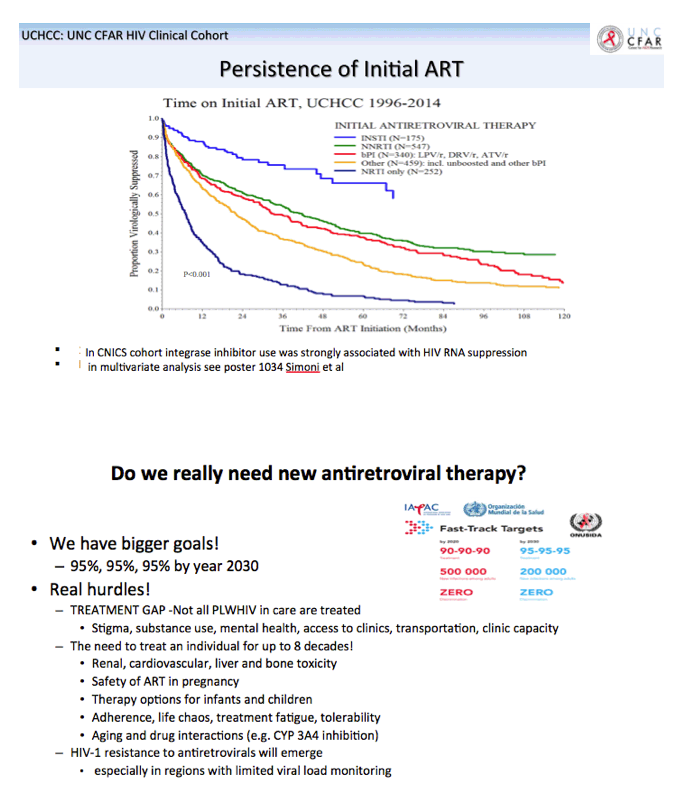
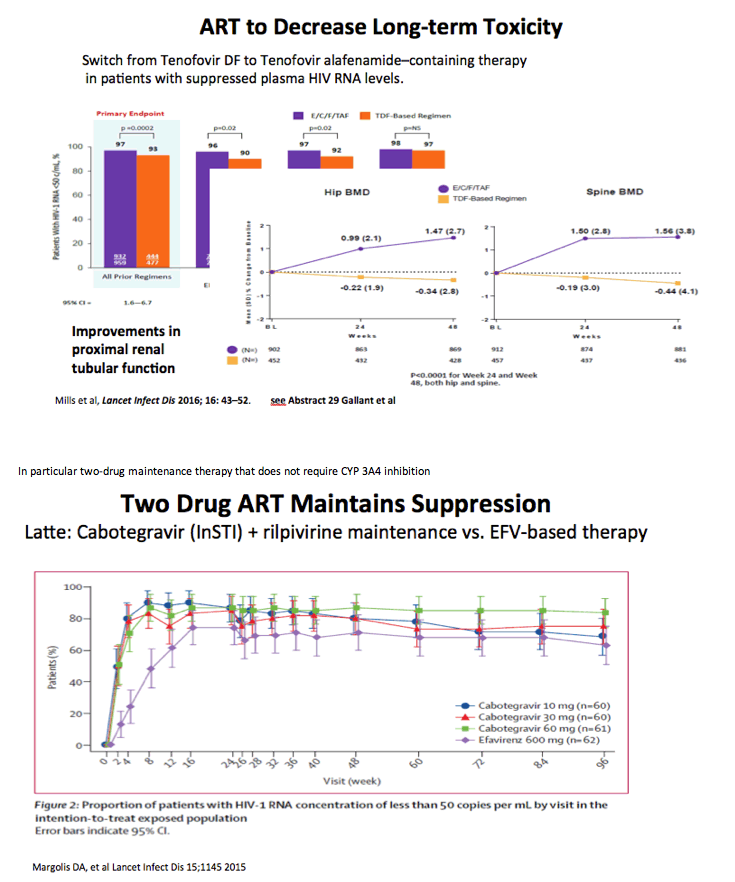
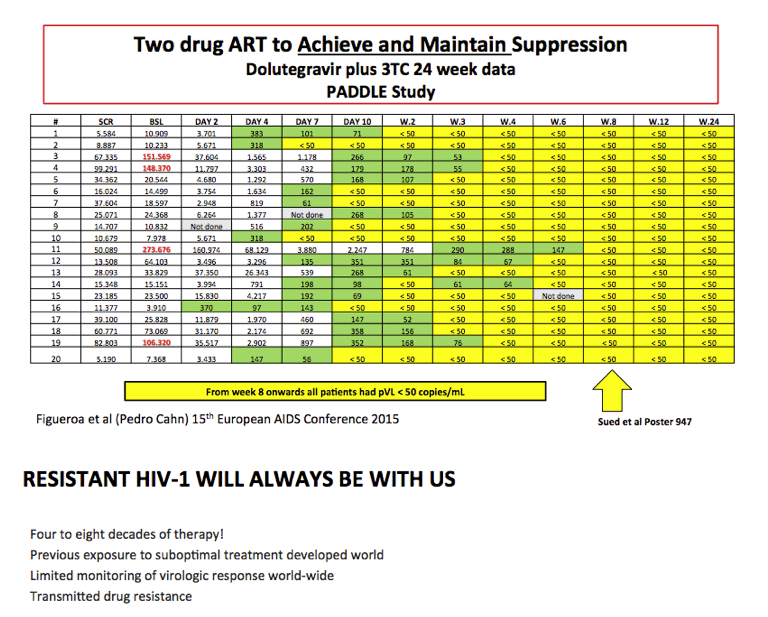
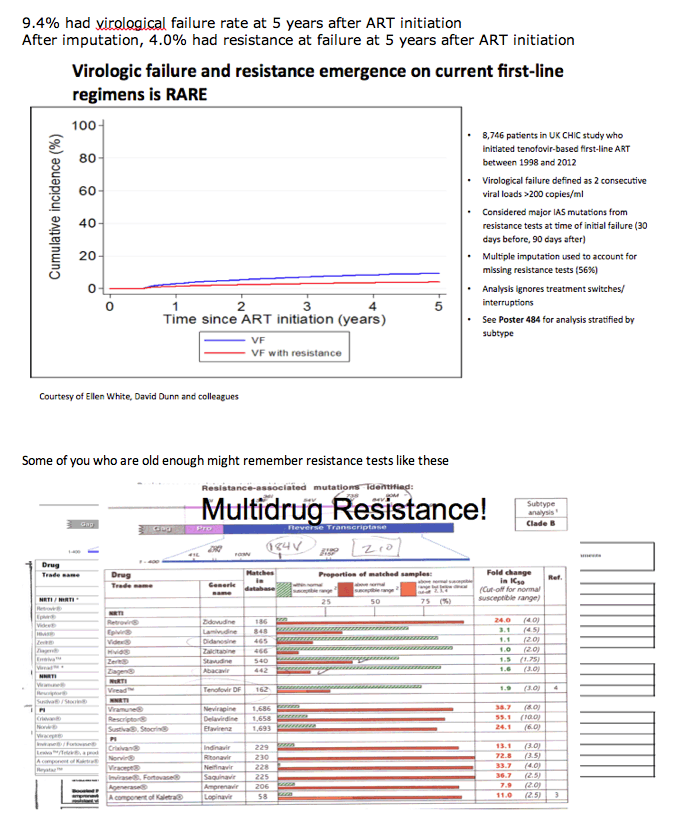
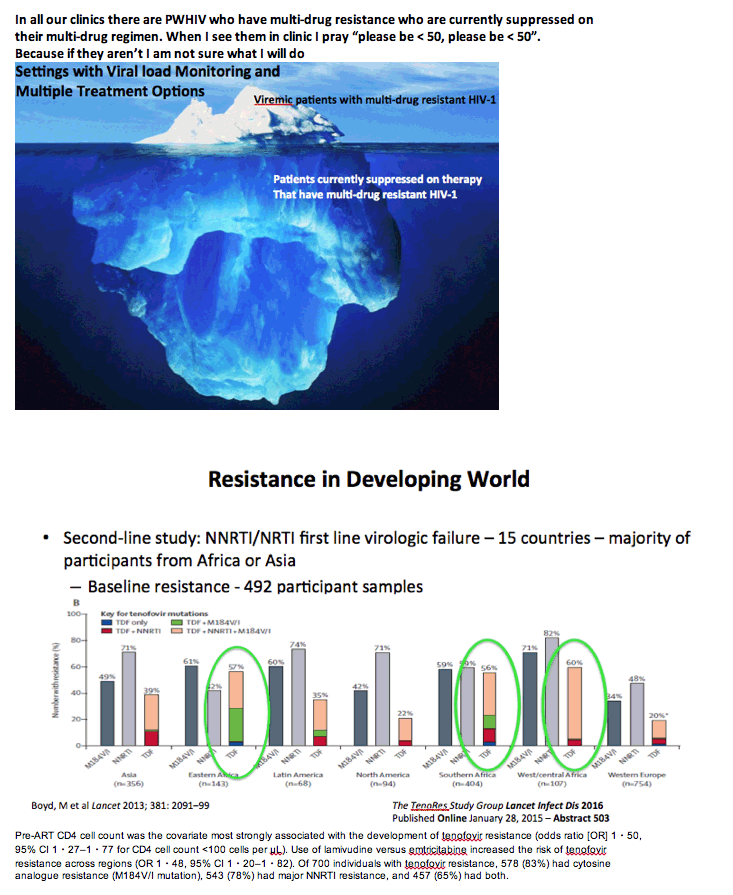
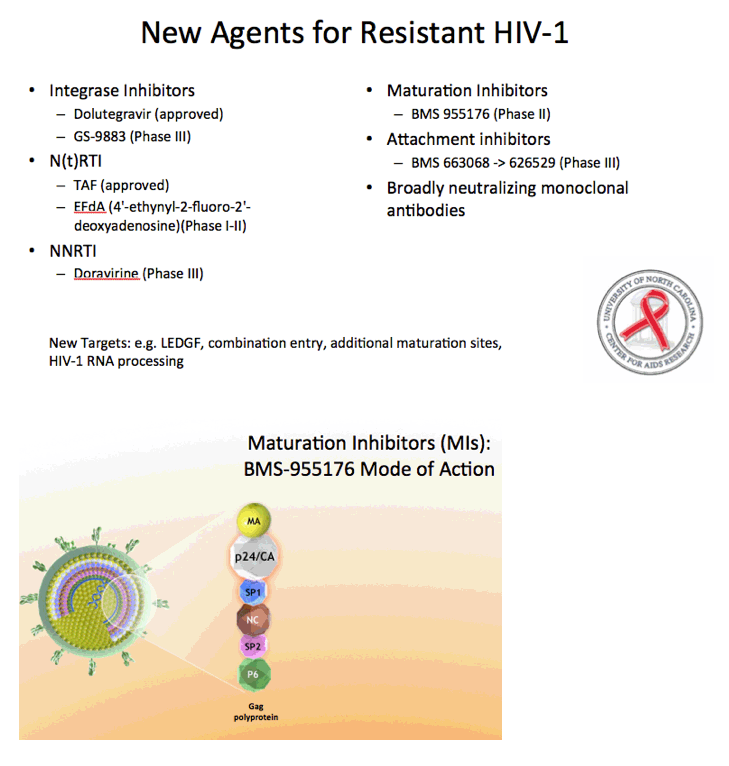
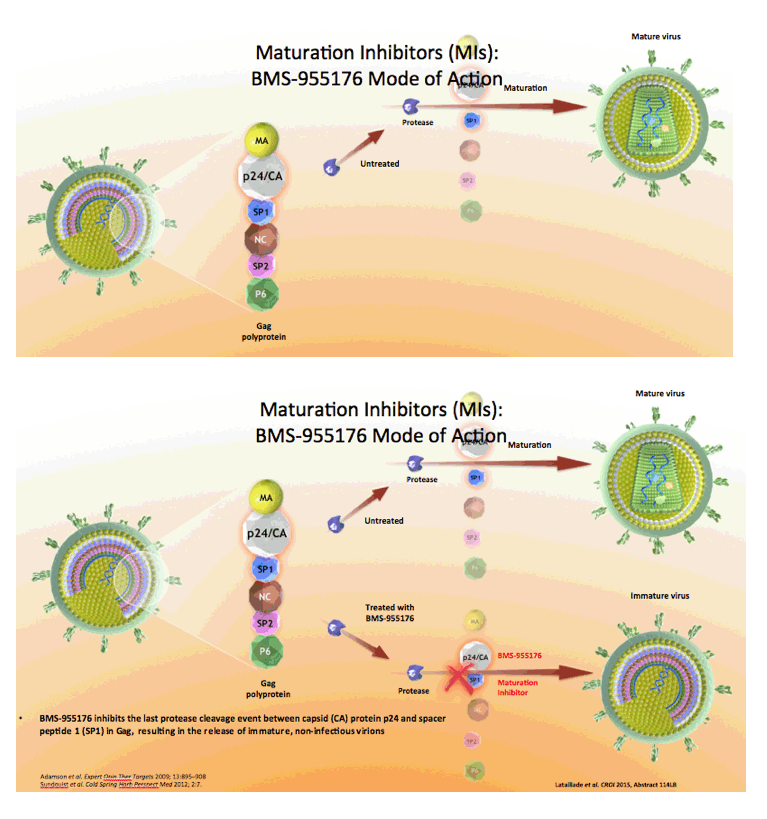
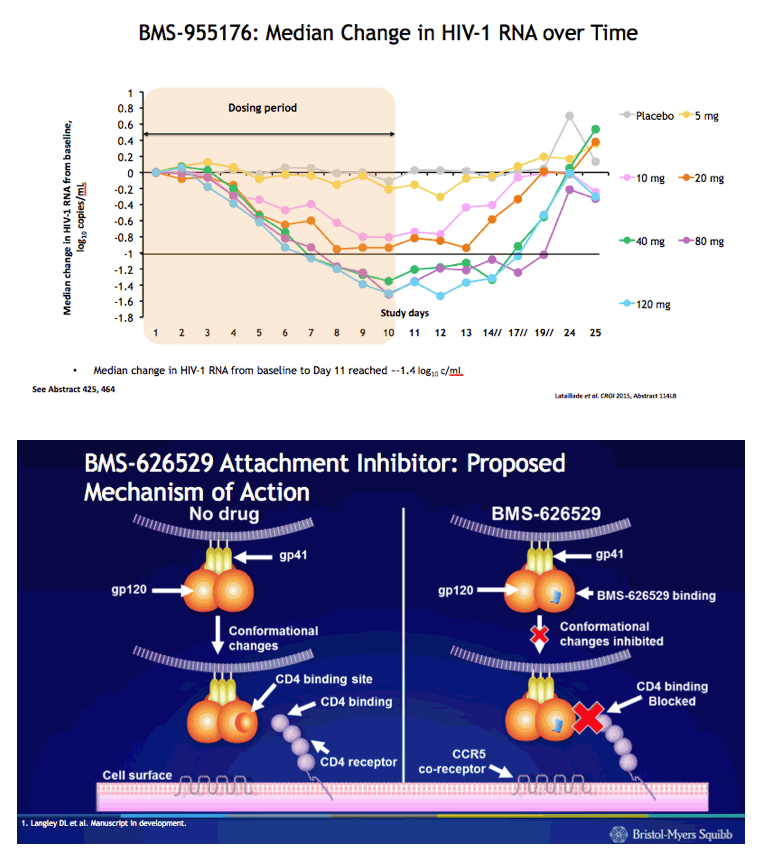
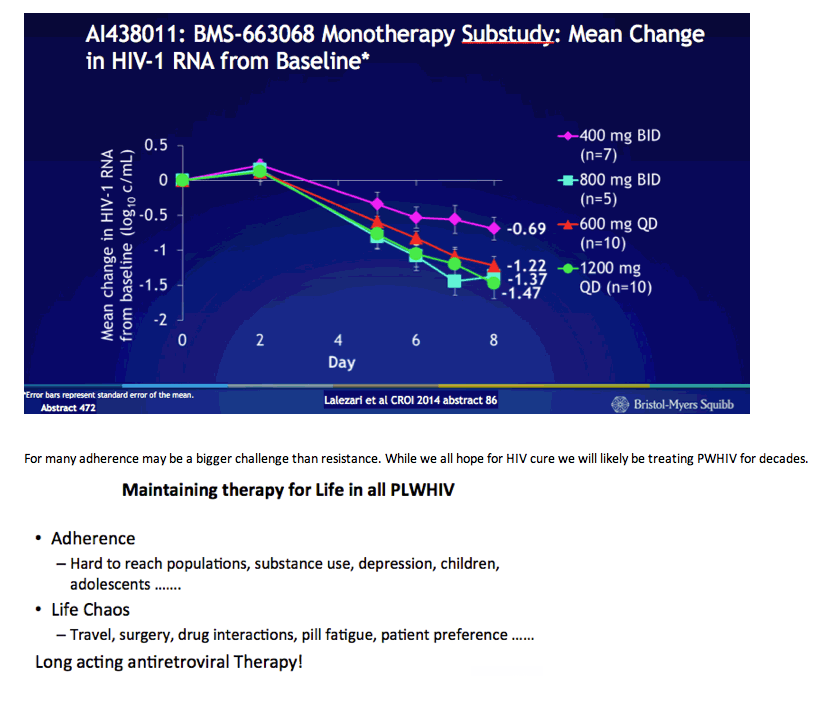
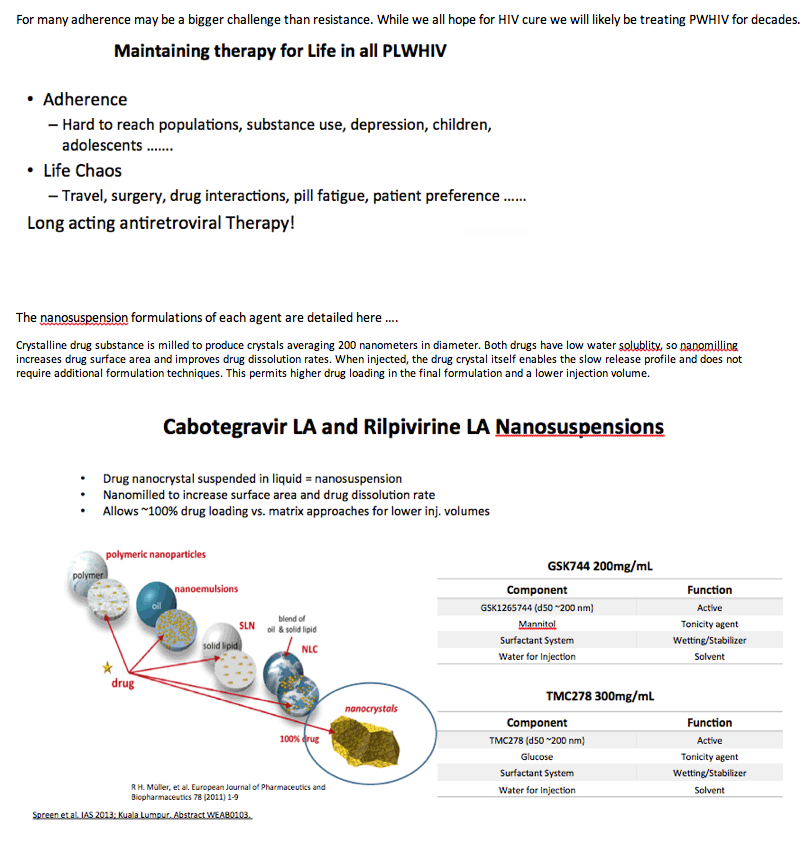
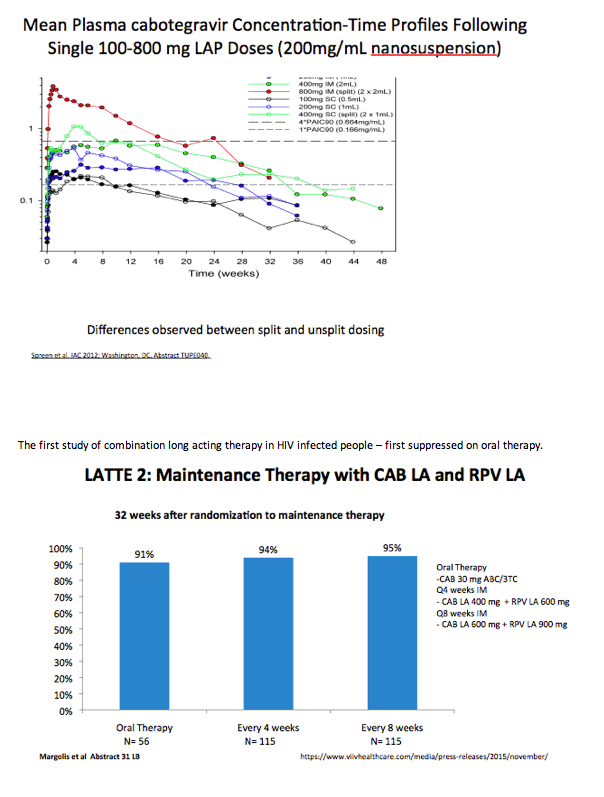
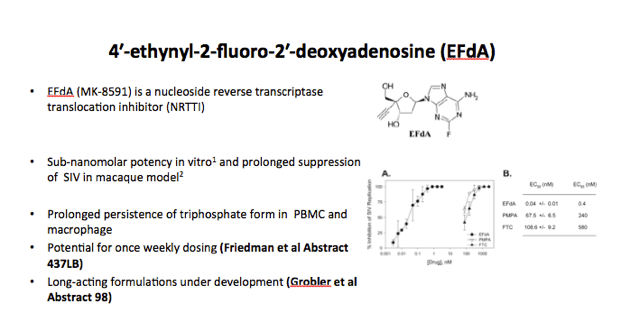
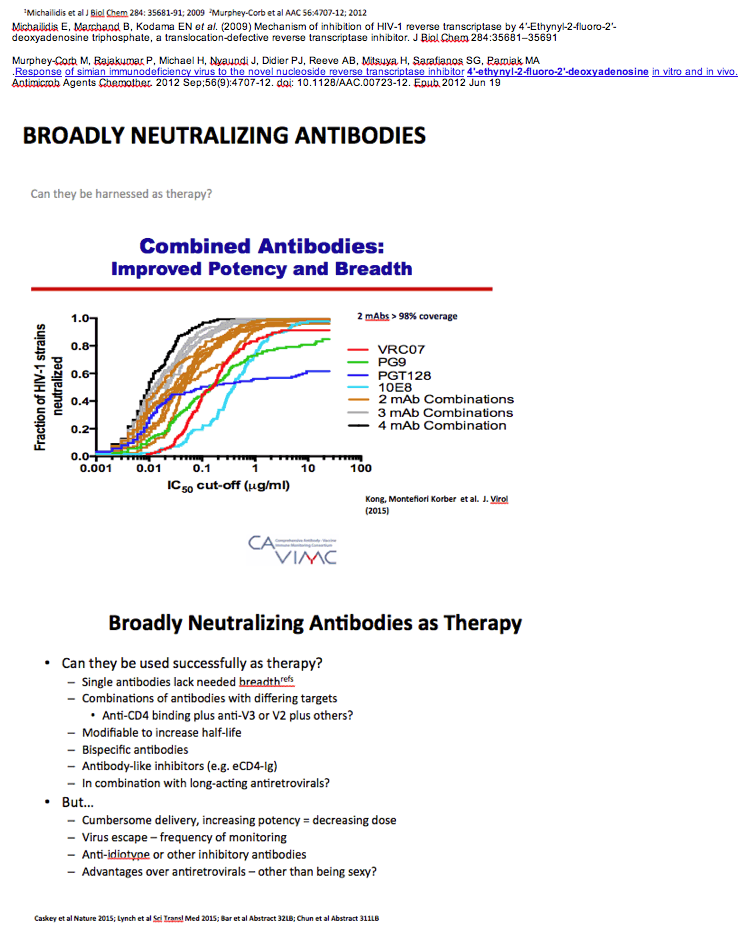
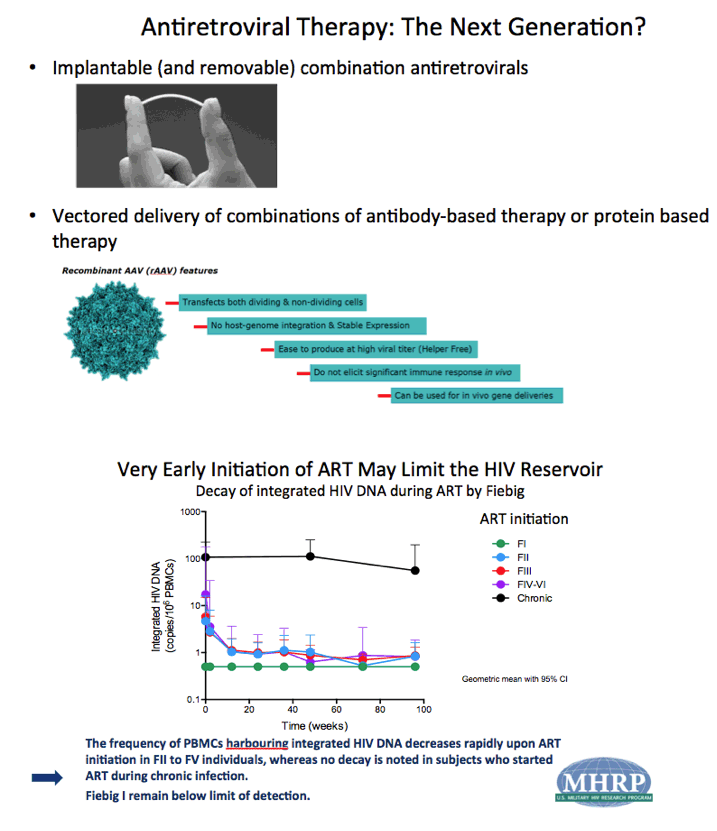
So what can we expect in the future? If we look back we can see that we have had substantial shifts in therapy in each decade since the virus was discovered. ZDV monotherapy in the late 80's, triple therapy that changed everything in the late 90's, fewer pills and STR in the mid-2000's and now maybe a shift to integrase-inhibitor based therapy. I think it is likely that simple oral tablets will remain a major component of our treatment for years but innovation and technology may well broaden our treatment options to reach more and more people – which is, of course, the ultimate goal.
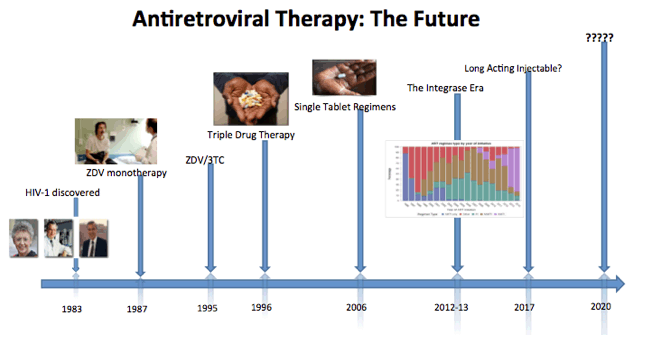
CROI: Repeated TLR7 Agonist Treatment of SIV+ Monkeys on ART Can Lead to Viral Remission - (02/24/16)
|
| |
|
 |
 |
|
|